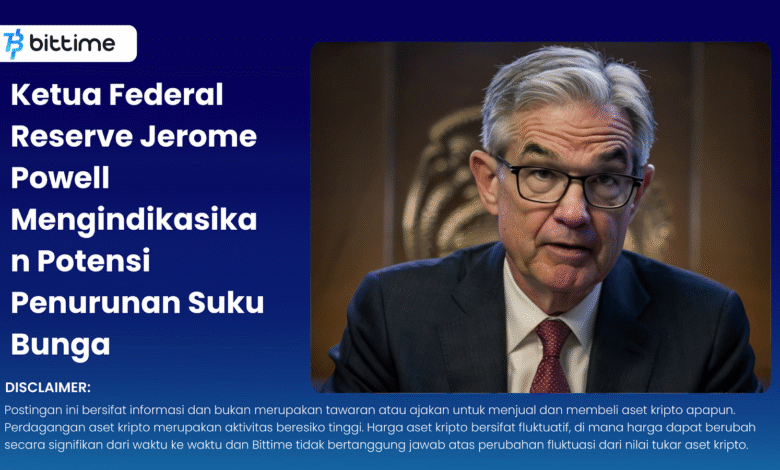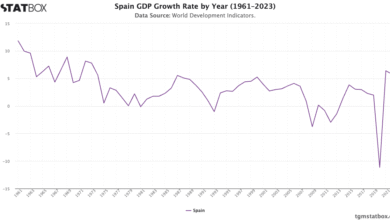Federal Reserve Rate Cut: Vance Criticizes Powell’s Stance

The recent call for a Federal Reserve rate cut has sparked significant debate among economic pundits and policymakers alike. With U.S. inflation rates showing only a modest increase, Vice President JD Vance joined former President Trump in urging the central bank to reconsider its current monetary policy. Vance criticized the Federal Reserve’s reluctance to lower interest rates, claiming it constitutes ‘monetary malpractice’ that could derail economic recovery. As discussions intensify in Washington, the potential economic impact of a rate cut has become a hot topic, especially with growing concerns over tariffs and their effects on pricing. As the Federal Open Market Committee prepares to announce its interest rate decision, stakeholders are keenly watching for signs of how this collaboration may influence future monetary strategies.
In recent discussions surrounding the need for adjustments in monetary policy, key figures like Vice President JD Vance and former President Trump have been vocal about advocating for a reduction in interest rates. Their criticism of the Federal Reserve’s current stance underscores a growing sense of urgency in light of shifting inflation dynamics. Many analysts believe that easing rates could provide vital support for the economy, especially amid concerns about rising tariffs and their potential ramifications. As the situation develops, the dialogue surrounding the Federal Reserve’s actions will likely continue to dominate economic headlines, influencing everything from consumer behavior to investment strategies. This scrutiny reflects a broader interest in how monetary adjustments can shape a more favorable economic landscape.
Criticism of the Federal Reserve’s Monetary Policy
The ongoing criticism of the Federal Reserve’s monetary policy has intensified as notable political figures like Vice President JD Vance and former President Donald Trump openly call for a reduction in interest rates. In recent statements, Vance accused the Fed of engaging in ‘monetary malpractice’ due to its reluctance to cut rates, claiming this inaction jeopardizes economic growth. Their argument hinges on the belief that the central bank’s current stance fails to adequately respond to lower inflation rates and shifting economic conditions.
The Vice President’s comments followed a Bureau of Labor Statistics report revealing a mere 0.1% increase in the consumer price index, indicating that inflationary pressures might be easing. With inflation reportedly sitting at 2.4% annually, which slightly exceeds the Federal Reserve’s target, Vance and Trump argue that the time has come for a more aggressive monetary policy approach that prioritizes lower interest rates to stimulate economic activity and investment.
The Implications of a Federal Reserve Rate Cut
A Federal Reserve rate cut could have significant implications for the U.S. economy. By lowering interest rates, the Fed would likely aim to foster a more favorable borrowing environment conducive to consumer spending and business investments. This change can potentially invigorate the labor market and overall economic growth, especially given recent trends indicating a moderation in inflation rates. If rates are reduced as Vance and Trump advocate, it might also alleviate pressure on consumers and businesses still grappling with the aftereffects of previous high tariffs.
However, the decision to cut rates is not taken lightly by the Federal Open Market Committee (FOMC). Officials are aware of the delicate balance required in monetary policy and are mindful of various economic signals. A rate cut could lead to short-term gains in economic activity; however, it necessitates a careful assessment of ongoing risks, including the potential for inflation to rise again. The Fed’s strategy must seek stability in economic expansion without making hasty moves that could counteract the benefits of previously established monetary frameworks.
Vance and Trump: A Political Coalition for Economic Change
The collaboration between Vice President JD Vance and former President Trump highlights a united front advocating for economic reforms, particularly in relation to monetary policy. Their criticism of Fed Chair Jerome Powell underscores a broader political narrative suggesting that the current administration is frustrated with the Fed’s cautious approach towards interest rate adjustments. By aligning their voices, Vance and Trump hope to galvanize public support for their push towards a comprehensive economic overhaul, including the potential for a decisive rate cut.
Such a political coalition can significantly influence market perceptions and expectations leading up to the FOMC’s next meeting. Traders and investors are attuned to the sentiments expressed by high-profile political figures, which can sway decisions that ultimately dictate the financial landscape. Both Vance and Trump’s insistence on immediate rate reductions reflects their commitment to fostering an economic environment that prioritizes growth over restrictive monetary policies, positioning themselves as champions for the average American struggling with increasing costs.
Analyzing Recent Inflation Rates: A Call for Change
The recent inflation rates reported by the Bureau of Labor Statistics have sparked serious discussions regarding the adequacy of the Federal Reserve’s current monetary strategies. With inflation leveling at a modest 2.4% annually, the argument for an interest rate cut becomes more compelling for critics who believe that the Fed’s policy should respond flexibly to changing economic realities. Vance’s claims that current inflation levels do not warrant the high federal funds rate target reinforce a narrative that favors proactive monetary easing.
Vance and Trump assert that pressures from tariffs have not sufficiently curbed inflation as anticipated and that the Fed’s failure to cut rates may hinder economic recovery. The expectation is that such a reduction could stimulate consumer confidence and spending, providing a necessary boost in an economy still in the process of navigating post-pandemic challenges. Overall, the political and economic discourse surrounding inflation and interest rates emphasizes the need for a dynamic approach to monetary policy.
The Role of Interest Rates in Current Economic Conditions
Interest rates serve as a critical lever in the Federal Reserve’s monetary policy toolbox, wielding the power to influence economic conditions profoundly. Current debates among policymakers and political figures focus on how a reduction in interest rates could provide immediate relief to consumers and businesses by lowering borrowing costs. Given that rates have not been cut since December, proponents of a reformative policy argue that the economy warrants such a move to counteract previous inflation pressures and stimulate growth.
Conversely, there are concerns that ongoing inflation uncertainties could inform the Fed’s hesitance to implement a rate cut swiftly. As the labor market shows signs of moderation, the interplay between interest rates and economic health becomes increasingly pronounced. Properly calibrated interest rates can encourage investment and spending, but the potential for inflation surges must also be considered to ensure a balanced approach to monetary policy.
Future Projections for Federal Reserve Actions
As anticipation grows for the forthcoming FOMC meeting, market analysts are closely monitoring potential shifts in Federal Reserve policies. Current expectations seem to lean towards the idea of a rate cut being more favorable in the near future, with many traders pointing to easing inflation indicators as justification for a shift in monetary policy. However, the complexities surrounding economic growth projections complicate the picture, as policymakers must consider both short-term needs and long-term stability.
Fed Chair Powell and committee members are tasked with navigating these challenges, balancing pressures from political figures like Vance and Trump against the inherent risks that accompany a rate cut. Historical data often shows how such decisions can ripple throughout the economy, impacting everything from consumer behavior to business investments. Understanding these dynamics will be crucial as officials prepare to announce their interest rate decision and its implications for future economic conditions.
Political and Economic Impacts of Rate Cuts
The intersection of political discourse and economic policy, particularly regarding interest rates, cannot be overstated. Vance and Trump’s advocacy for a rate cut is indicative of a broader strategy that seeks to align political motives with economic realities in order to foster public support. Their approach emphasizes the idea that easing monetary policy could not only enhance economic conditions but also reflect responsive governance aimed at serving the needs of everyday citizens.
On a larger scale, the implications of a rate cut could reverberate throughout various sectors, influencing everything from investment behaviors to international trade relationships. As the Fed navigates these waters, the impacts of such an economic policy shift will demand careful consideration to ensure that the benefits outweigh the risks associated with inflationary pressures. Ultimately, the ongoing dialogue about interest rates epitomizes the delicate balance between effective monetary policy and responsive governance.
Market Reactions to Federal Reserve Communications
Market sentiment regarding Federal Reserve communications can drastically influence expectations for future economic policies. As traders analyze comments from Vance, Trump, and Fed officials, they adjust their strategies accordingly. The anticipation surrounding interest rate decisions adds an element of volatility, especially as perceived changes in monetary policy could lead to either bullish or bearish trends in different markets.
The immediacy of these reactions underscores the importance of clear communication from the Federal Reserve about its economic outlook and decision-making rationale. With discussions surrounding rate cuts amplifying, financial markets will remain vigilant in response to any signals regarding changes in interest rates. Investors are eager to know whether the Fed will heed the calls for action from significant political figures and respond to the evolving inflation landscape.
Evolving Economic Strategies in Response to Inflation
As inflation rates fluctuate, so too must the economic strategies employed by the Federal Reserve. The evolution of these strategies is crucial to addressing both current economic realities and future considerations. Vance and Trump’s highlights of the need for a rate cut emphasize the urgency for adaptive policies capable of mitigating the challenges posed by inflation, potentially enhancing consumer spending power and promoting economic growth.
Strategically, the Fed’s ability to adapt to changing conditions, such as the easing of inflation rates, remains vital to maintaining economic stability. If the administration can convince the Fed to cut rates, the anticipated economic benefits could include increased consumer optimism and a boost to business confidence. However, the Fed must also navigate potential backlash should inflation begin to rise again post-rate-cut.
Frequently Asked Questions
What is the current stance of the Federal Reserve regarding rate cuts?
The current stance of the Federal Reserve is cautious, with officials expressing concerns about inflation and the potential economic impacts of tariffs. However, recent statements from figures like Vice President JD Vance indicate a push for rate cuts to ease monetary policy, following inflation rates that exceed the Fed’s target.
How does the Federal Reserve rate cut impact inflation rates?
A Federal Reserve rate cut typically aims to stimulate economic activity by lowering borrowing costs, which can lead to increased spending and investment. This may help reduce inflation rates if it encourages demand without causing excessive price increases.
What are the economic implications of a Federal Reserve rate cut?
The economic implications of a Federal Reserve rate cut can be significant. Lower interest rates can boost consumer spending and business investment, potentially leading to improved economic growth. However, if done too late or excessively, it may exacerbate inflationary pressures.
Why are Trump and Vance urging the Federal Reserve to cut rates?
Trump and Vice President JD Vance are urging the Federal Reserve to cut rates to loosen monetary policy amid rising inflation concerns. They believe that a proactive approach is necessary to support economic growth and counteract what they describe as ‘monetary malpractice’ by the Fed.
How does the Federal Reserve’s interest rate decision affect the overall economy?
The Federal Reserve’s interest rate decisions directly affect the overall economy by influencing consumer and business borrowing costs. A rate cut can stimulate economic growth, while a rate increase can help combat inflation but may slow down economic activity.
When is the Federal Reserve expected to announce its next interest rate decision?
The Federal Reserve is expected to announce its next interest rate decision following a two-day meeting scheduled for next week. Markets are currently anticipating no immediate rate cut, but there are discussions about potential cuts in September.
What role does monetary policy play in managing inflation rates?
Monetary policy plays a critical role in managing inflation rates by adjusting interest rates to influence economic activity. When inflation is above target levels, the Federal Reserve may raise rates to cool off the economy, while rate cuts can stimulate growth if inflation is low.
What does ‘monetary malpractice’ mean in the context of the Federal Reserve rate cut discussion?
‘Monetary malpractice’ in this context refers to the criticism directed at the Federal Reserve by Trump and Vance for not cutting rates, which they believe could help mitigate inflation and stimulate economic growth, especially in light of recent economic data.
How does the collaboration between Trump and Vance influence Federal Reserve policy?
The collaboration between Trump and Vance amplifies pressure on the Federal Reserve, as their prominent positions may influence public opinion and potentially sway the central bank’s approach towards monetary policy and rate cuts.
What factors influence the Federal Reserve’s decision on interest rate cuts?
Factors influencing the Federal Reserve’s decision on interest rate cuts include inflation rates, economic growth indicators, labor market conditions, and external pressures such as tariffs. The Fed aims to balance these variables to maintain economic stability.
| Key Points | Details |
|---|---|
| Vance and Trump Criticism | Vice President JD Vance has joined President Trump in criticizing Federal Reserve Chair Jerome Powell, alleging that the Fed is engaging in ‘monetary malpractice’ by not reducing interest rates. |
| Recent Inflation Data | The Bureau of Labor Statistics reported a minor increase of 0.1% in the consumer price index, with annual rates of 2.4% and 2.8%, exceeding the Fed’s target of 2%. |
| Demand for Rate Cuts | Vance echoed Trump’s call for the Fed to ease monetary policy, emphasizing that tariffs haven’t significantly influenced inflation. |
| Upcoming Rate Decision | Markets currently predict no rate cut in the upcoming announcement but foresee a potential easing in September. |
| Comments from Experts | Experts like Elyse Ausenbaugh suggest that easing inflation and a moderating labor market may warrant a rate cut, although caution is advised. |
Summary
The Federal Reserve rate cut is a major topic of discussion among key political figures, with Vice President JD Vance and President Trump urging the central bank to reconsider its stance on interest rates to address inflation concerns. As inflation rates continue to exceed the Fed’s target, both leaders argue that inaction could be detrimental to the economy, labeling it a form of ‘monetary malpractice’. With the Federal Open Market Committee meeting approaching, the financial markets are on high alert, anticipating potential changes in monetary policy that could impact economic stability.



